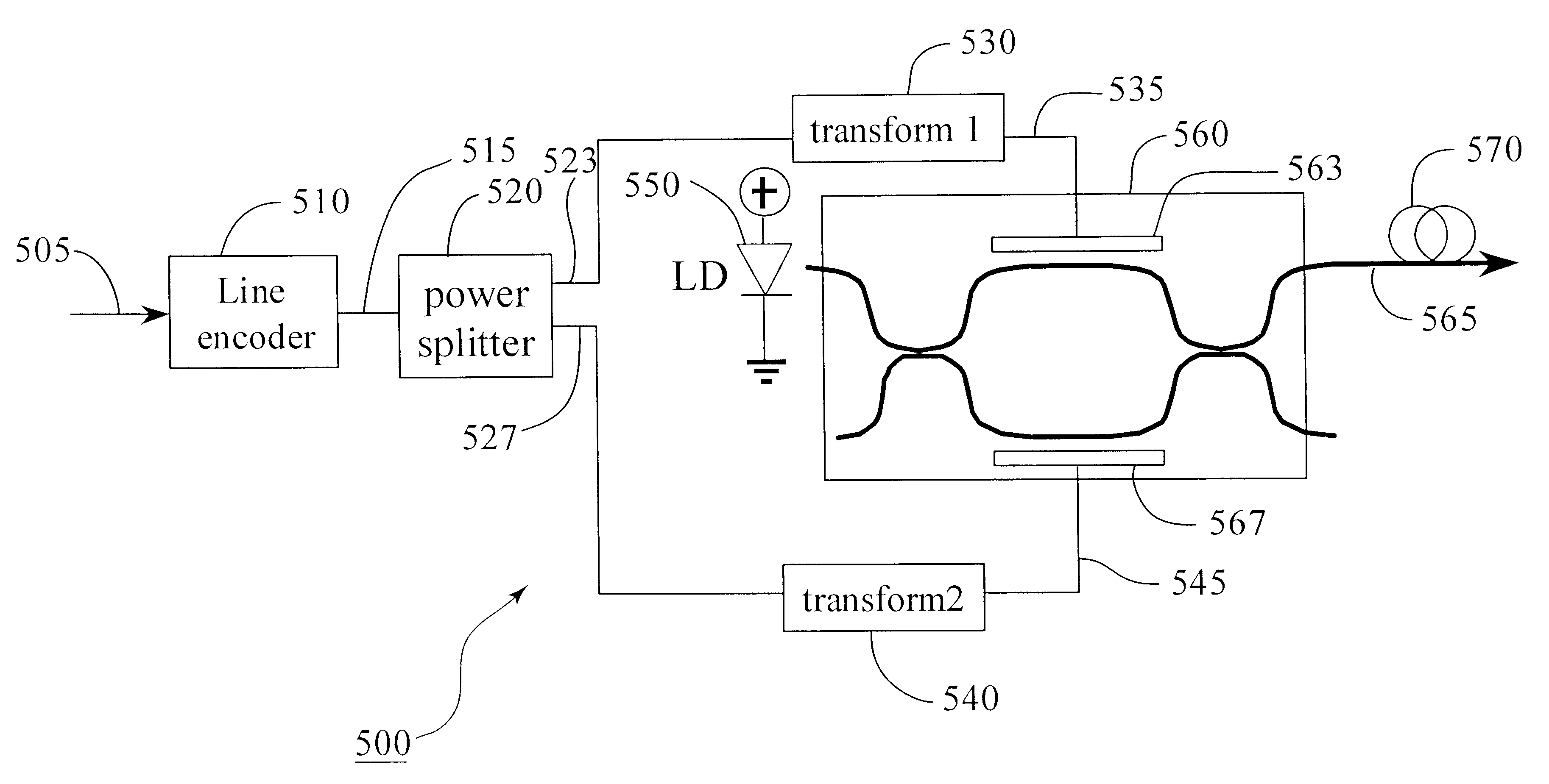Method and system for single-sideband optical signal generation and transmission
- Summary
- Abstract
- Description
- Claims
- Application Information
AI Technical Summary
Problems solved by technology
Method used
Image
Examples
Embodiment Construction
The first through third exemplary embodiments of the invention provide a transmission system that use, for example, an MZ modulator, such as a commercial dual-electrode, traveling-wave modulator. As shown in FIG. 5, in accordance with the first exemplary embodiment of the invention, the transmission system 500 includes a line encoder 510, a power splitter 520, a first transform mechanism 530 and a second transform mechanism 540, a light source 550, an MZ modulator 560 and the transmission optical fiber 570. The line encoder 510 is coupled to the power splitter 520. The power splitter 520 is coupled to the first and second transform mechanisms 530 and 540. The first and second transform mechanisms are coupled to the MZ modulator 560. The modulator 560 is also coupled to the light source 550 and the transmission fiber 570.
A baseband data signal 505 is input to the system 500 and is line coded using the line encoder 510, which generates an encoded data signal 515 with little low-freque...
PUM
 Login to View More
Login to View More Abstract
Description
Claims
Application Information
 Login to View More
Login to View More - R&D
- Intellectual Property
- Life Sciences
- Materials
- Tech Scout
- Unparalleled Data Quality
- Higher Quality Content
- 60% Fewer Hallucinations
Browse by: Latest US Patents, China's latest patents, Technical Efficacy Thesaurus, Application Domain, Technology Topic, Popular Technical Reports.
© 2025 PatSnap. All rights reserved.Legal|Privacy policy|Modern Slavery Act Transparency Statement|Sitemap|About US| Contact US: help@patsnap.com



